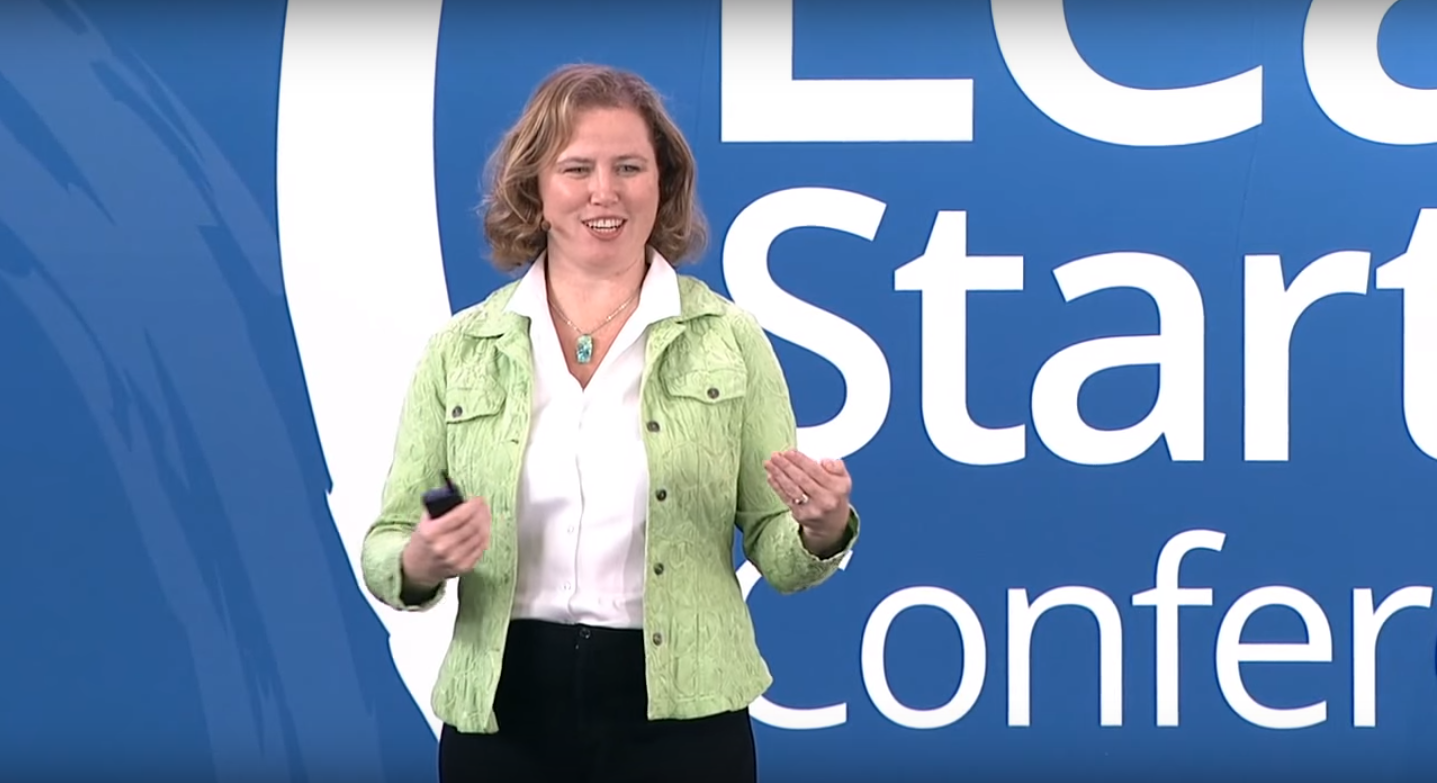Running A Lean Startup within GE

As the oldest company on the stock exchange, GE might not seem like a candidate for most innovation, but to Johanna Wellington, CEO of GE Fuels, it makes perfect sense. “You don’t survive that long if you don’t continually reinvent yourself,” she explained.
Johanna, who has worked at GE for years, says Lean Startup principles are truly embraced at GE, by leadership and employees alike. That’s one reason why her unique career path was possible: she started managing GE’s standard business divisions, but a new position within their Global Research Center meant her role became essentially that of an internal VC angel, focusing on projects to support within the company.
Because of GE’s Lean culture, every department and employee is encouraged to have big ideas, which have the potential to then gain support and funding from the research team. One of those big ideas Johanna eventually supported zeroes in on the potential of fuel cell technology. GE’s plan is now to build industrial-size, highly efficient oxide fuel cells that may positively impact the environment. Ultimately, the concept was good enough to merit its own startup structure within the company, and Johanna stepped forward to lead it.
In her talk at the Lean Startup Conference 2015, ‘Running a Lean Startup Inside a Big Corporation,’ Johanna shared her experience as the CEO of GE Fuel Cells, providing insight not only on running lean within a giant corporation, but also at a giant manufacturing company.
Although GE embraces Lean culture across the organization, there were some notable differences when it came to running a true startup within the corporation.
The Known Unknown
At big corporations, forecasting and accurate predictions are an integral part of business operations. Working on a completely new technology meant that Johanna frequently had to accept and admit, both to her team and her superiors, that she simply didn’t know certain things – whether it was how long a project would take or whether a method would work at all. It also meant that she prioritized figuring how to do things right over just getting it done. Sometimes, that means missing milestones rather than moving forward with a flawed process. At the same time, Johanna notes the lack of a rigid roadmap makes the day-to-day more exciting; in her leadership role, she is making big decisions every day with the help of her team.
Planning for Failure
At a company like GE, most business units are expected to be hitting goals and benchmarks. In contrast, in the startup environment, you actually have to plan for failure. At a minimum, that means building time for failure into any project plan. It also must be factored in when having conversations with execs, specifically when it comes to managing expectations. Instead of making promises, Johanna is more likely to let her bosses know ahead of time that, somewhere along the road, things are probably going to break. Finally, it changes how she interacts with her team. Creating an environment where honesty and problem-solving are more valued than ‘quick wins’ is critical to a startup’s success.
Re-Thinking the MVP
There are all sort of creative ways to approach the MVP, and not all of them have to resemble the final product. For GE Fuel Cells, producing even a prototype was a massive undertaking, due to its demand for complex hardware and technology. So when Joanna first approached customers to get feedback, her MVP was simply a data sheet. She used it to validate the need and consider basic requirements before she went about building the product itself. The next iteration of her MVP was also unique, consisting of the process for building the fuel cells. Testing and validating whether they could make the fuel cells at scale was the biggest priority for the startup, and so the MVP had to be process rather than product.
Leveraging Internal Resources
Despite the challenges, there are some big advantages to having the support of a big company behind your startup, and one of them is access to internal resources. Johanna’s familiarity with many teams at GE and the GE catalogue enable her to execute more efficiently and effectively. Plus, GE’s lean, innovative culture means she’s not afraid to ask a favor from someone in another GE business unit, even when the project or favor might not be specifically tied to their own goals. That level of corporate support empowers her to move quickly once a concept is validated and is ready to go.
Overall, GE has created an environment where each of its divisions can work the way it needs to in order to reach its set targets. As Johanna explains, the bigger company is like an ocean liner. It shouldn’t move quickly or turn too fast because it might capsize. On the other hand, she says, illustrating her startup’s need for flexibility, “I’m a motorboat. I have to hit a bunch of points, and if I can’t move fast, I’m going to run out of gas before I get there.”
Learn more about GE Fastworks at Lean Startup Labs: Enterprise Summit in New York City on Feb 25. Or immerse yourself in a full week of Lean Startup methodology and entrepreneurship at Lean Startup Week in San Francisco, Oct 31 – Nov 6.
